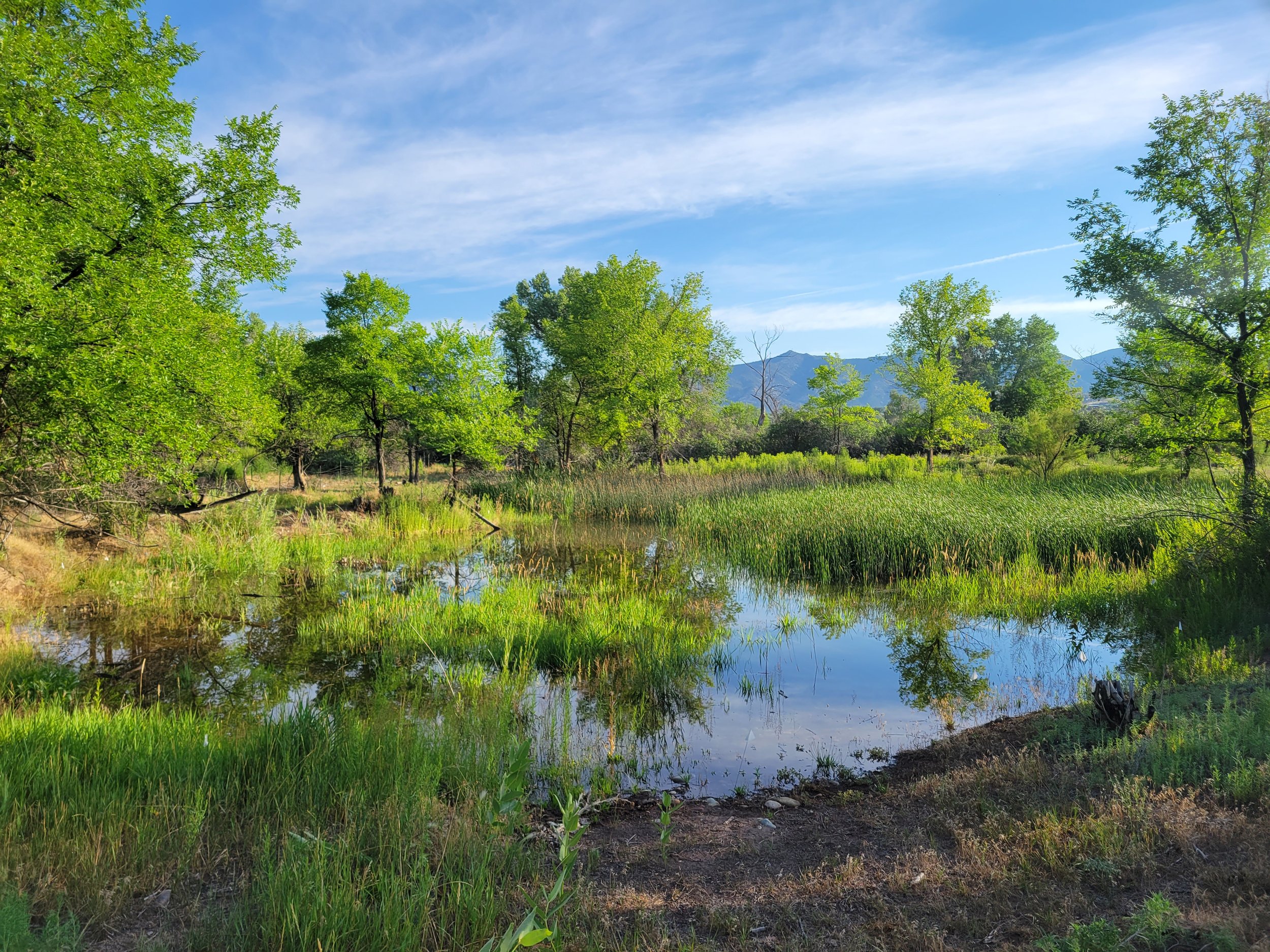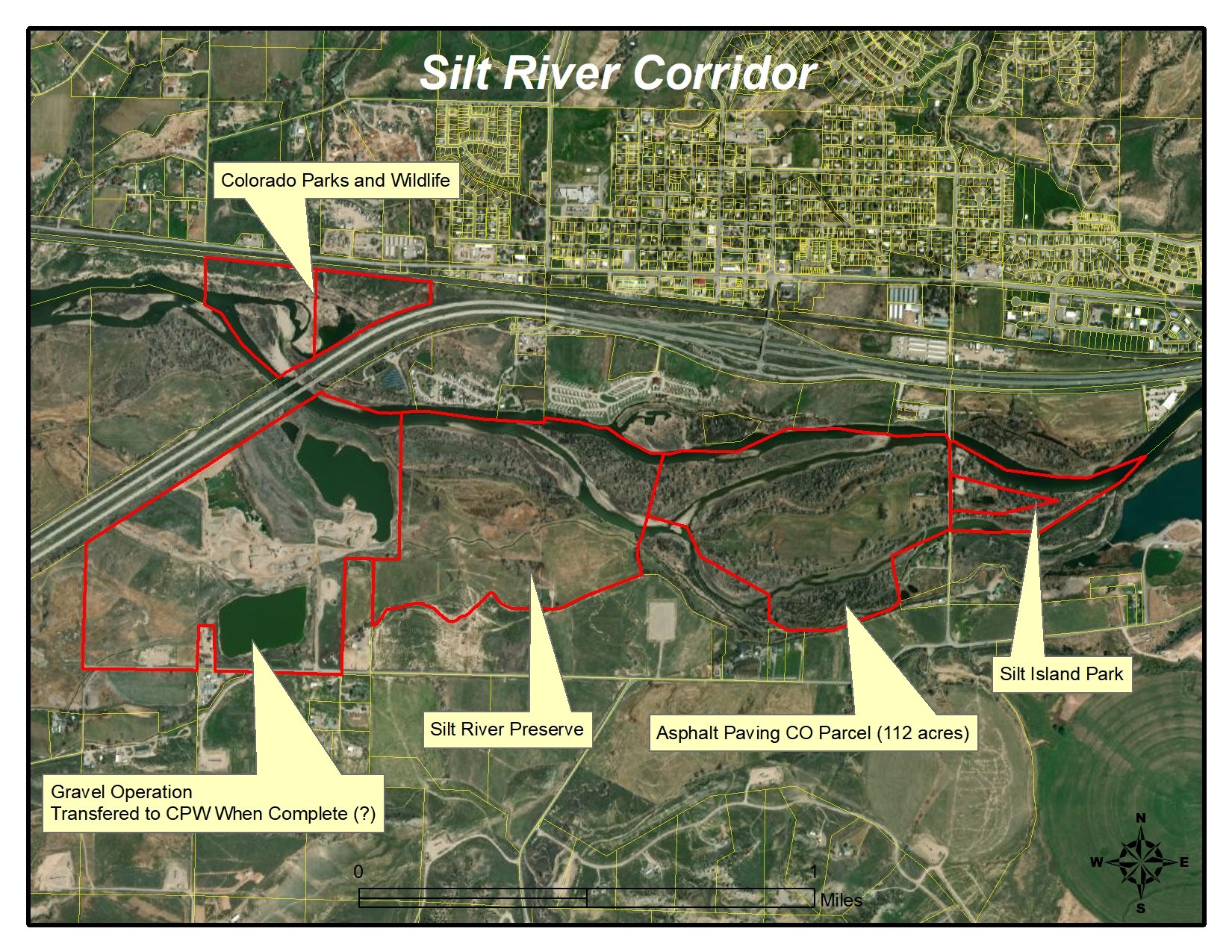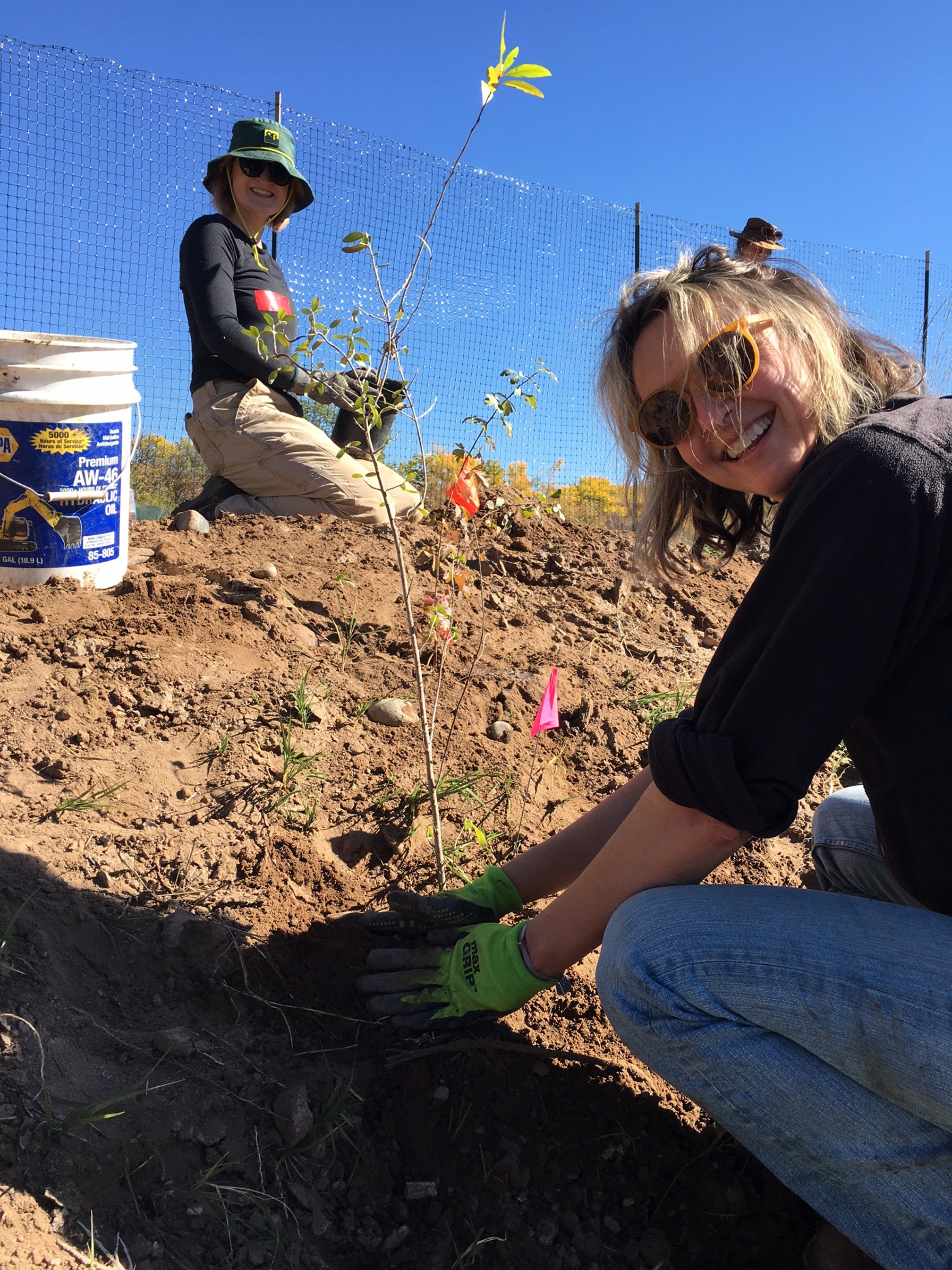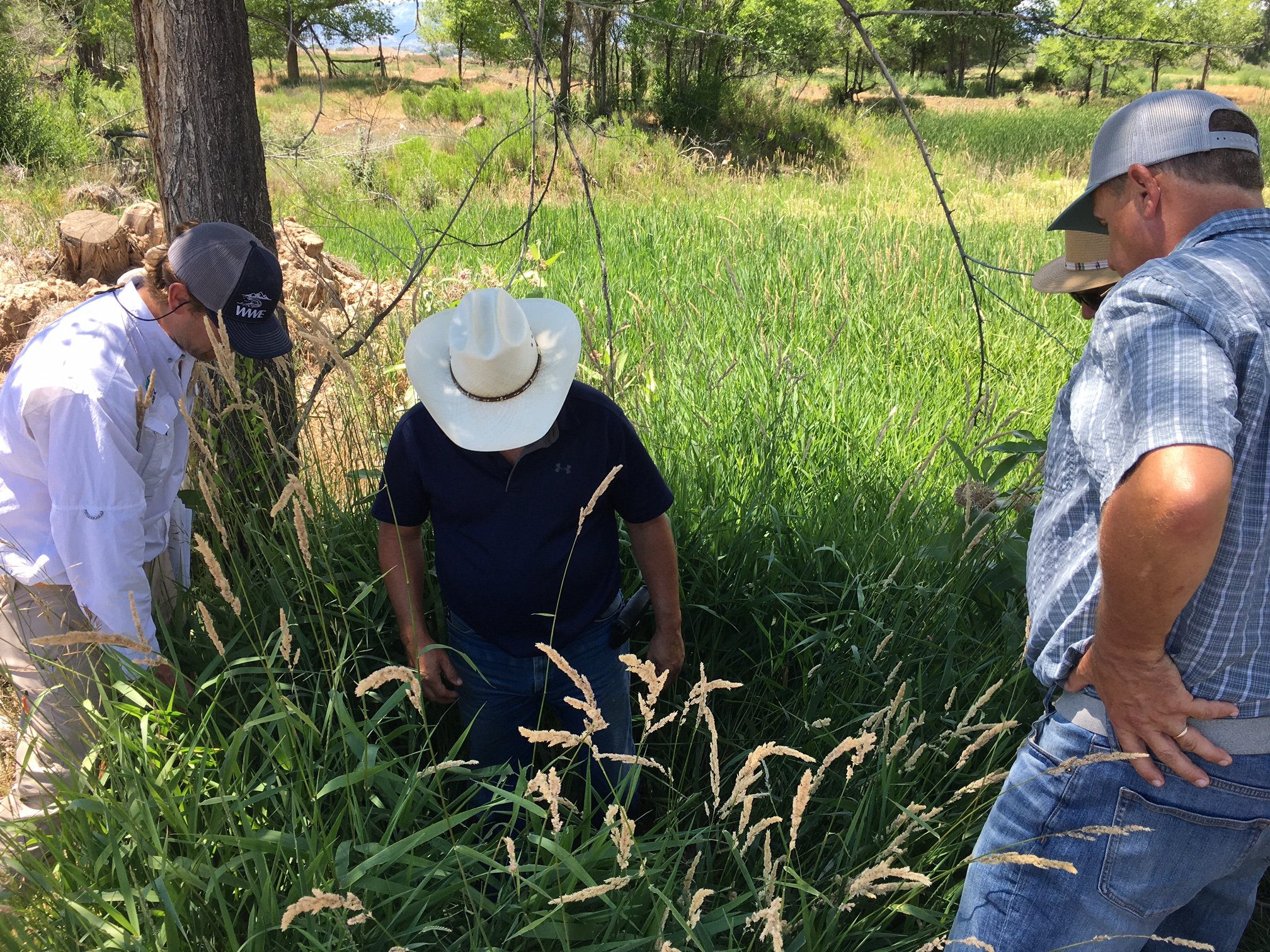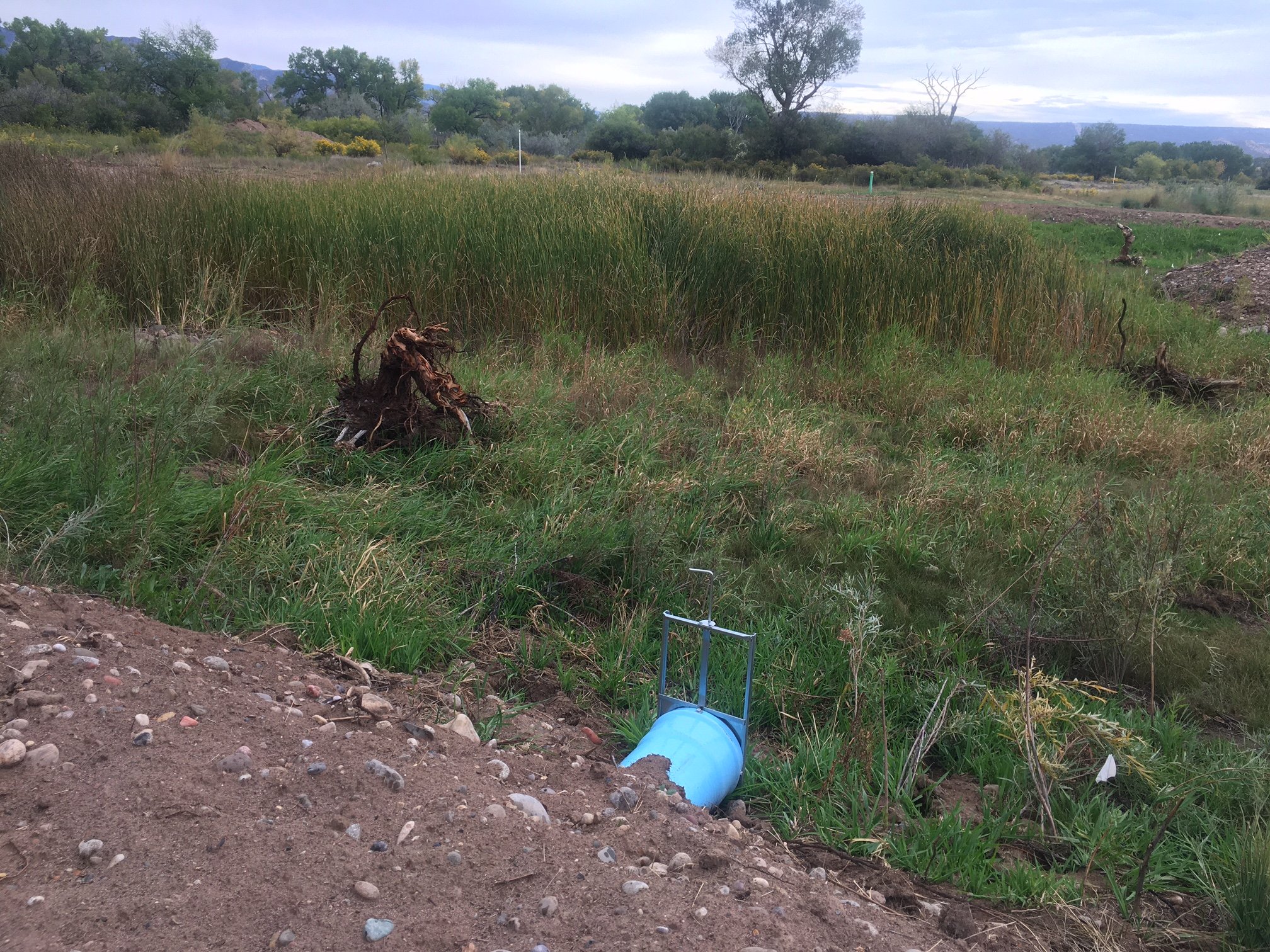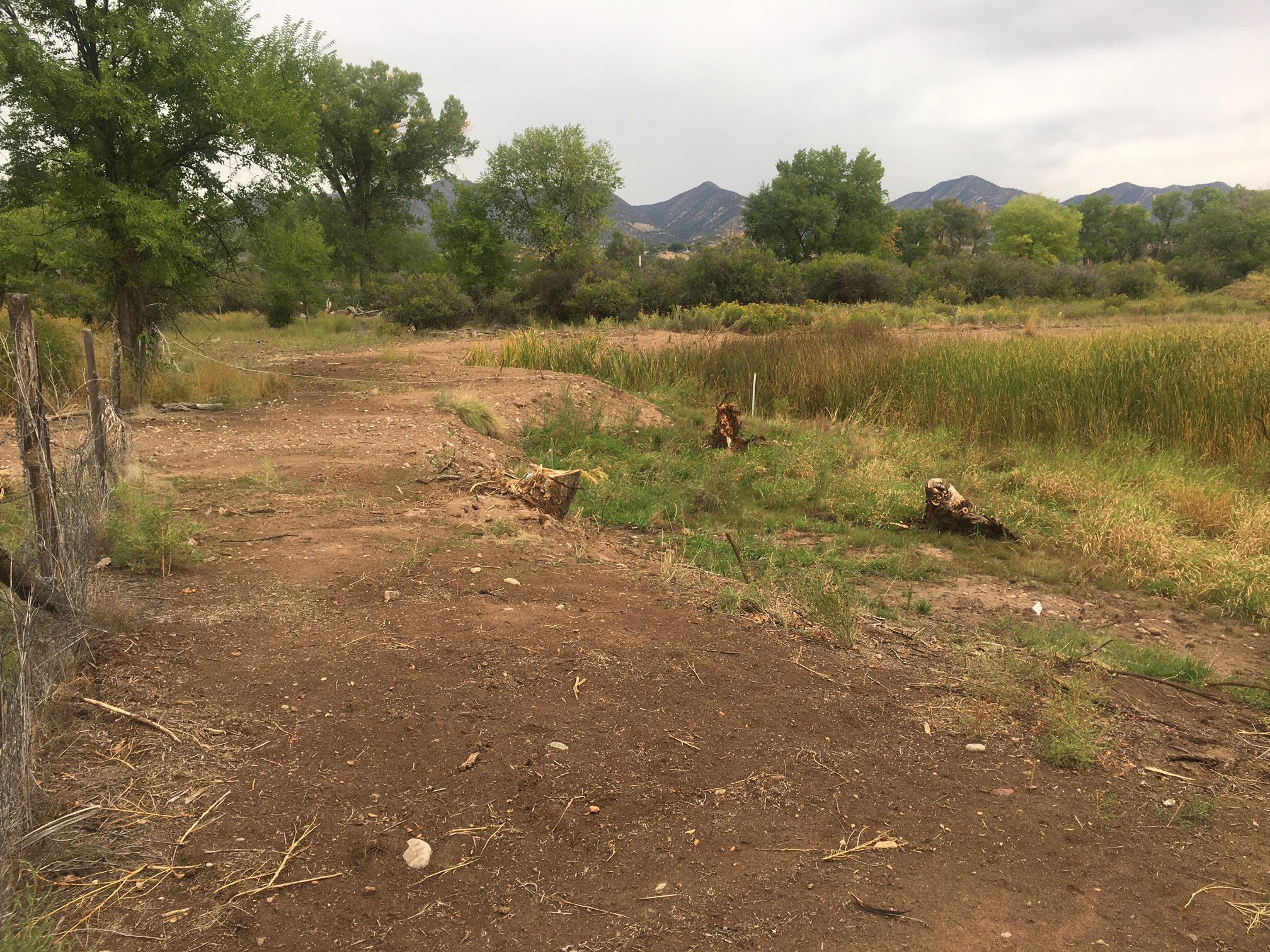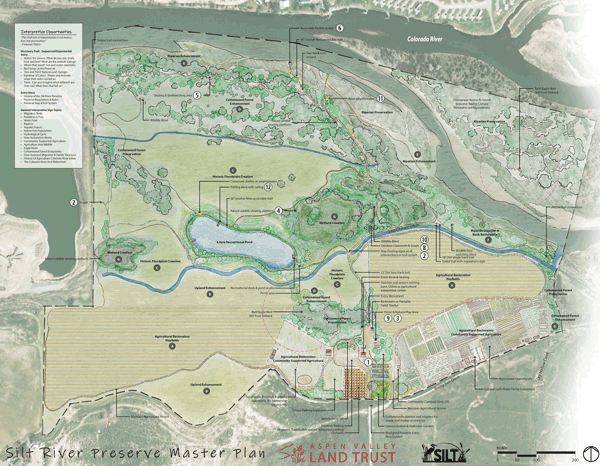Silt Preserve on the Colorado River
The 132-acre Silt River Preserve is owned by the Town of Silt and conserved through the Aspen Valley Land Trust (AVLT). Once heavily grazed and later identified as part of a proposed 2,000‐unit development along 0.6 miles of the Colorado River, this land was relatively degraded but had excellent restoration potential to become a natural, riverside park. The expansive extent and limited development of the preserve allow for numerous restoration opportunities to re-establish a high-quality riparian and transitional upland interface ecological community. The variety of habitat types and diversity of wildlife in the preserve present unique opportunities to conduct restoration with specific species and habitat interventions.
Middle Colorado Watershed Council (MCWC) partnered with AVLT to create a functional wetland community in the northwest quadrant of the preserve. The extent of the wetland habitat creation depended on the resources available. The location and method of diverting water from the Last Chance or the Rising Sun ditches were assessed. Improving three freshwater ponds covering 3.01 acres would enhance the wetland.
The ponds provide excellent nesting, foraging habitat and cover for a diversity of birds, small mammals, reptiles, and amphibians. With the current trend of hydrological conditions in the west, these freshwater ponds are likely more consistent with an emergent wetland classification. The vegetative diversity within these habitats had high densities of cattails and soft-stem bullrush. Active enhancement measures allow the ponds to resemble an open freshwater habitat with peripheral emergent wetland along the ponds’ edges.
In October 2022, revegetation efforts around Pond 8 at the Silt River Preserve were completed as a collaborative effort between the MCWC, the Town of Silt, AVLT, Roaring Fork Outdoor Volunteers, and DHM Design. More than 30 volunteers showed up to plant 415 native tree and shrub species adapted to Colorado River floodplain ecology. The fringes of the pond and transitional and upland areas adjacent to the pond were fully revegetated through this effort, and one acre was seeded utilizing native site-specific seed mixes developed for restoration efforts at Silt Preserve.
This focused restoration was to revitalize the hydrology, create a wetland habitat pond and establish native shrub and tree species, providing vital wildlife habitat for forage and cover. To initiate the restoration, invasive Siberian elm (Ulmus pumila), Russian olive (Elaeagnus angustifolia) and salt cedars (Tamarix ramosissima) were removed. Approximately 10,000 sq. ft. around the existing depression was excavated and graded to support the functionality of the wetland habitat pond.
Referencing native vegetation found throughout the intact riparian communities of the Silt Preserve, native shrub and tree species were acquired. These species include: narrowleaf cottonwood (Populus angustifolia), plains cottonwood (Populus deltoides), redtwig dogwood (Cornus sericea), twinberry (Lonicera involuctra), threeleaf sumac (Rhus trilobata), Rocky Mountain willow (Salix monticola), and silverbuffalo berry (Sheperdia argentea).
In 2023 and 2024 project work continued at the Silt River Preserve, spearheaded by the collaborative partnership of The Town of Silt, MCWC, RFOV, and AVLT. Completed project work in 2023 included additional native riparian plantings, fence removal, vegetation management and general maintenance of the preserve. CWCB funds were also used to purchase a 2’ semi-trash water pump and hose attachments to provide additional irrigation for establishing native vegetation at the Preserve. The Town of Silt installed a small wooden bridge to connect the trail system between two of the ponds, recreational swings near the ponds and by the river, and a deck with a viewing area built over the middle pond, Pond 9.
With the funds provided by Colorado Water Conservation River District (CRD) and CWCB, Wright Water Engineers, Inc. (WWE) completed several key tasks for MCWC and the Town of Silt regarding the water rights for the Silt River Preserve. Through multiple site visits to the property, WWE worked with AVLT and MCWC to document existing conditions for the irrigation ditches and laterals, onsite ponds and related infrastructure, and observations of current and potentially irrigable lands on the property.
WWE reviewed the Water Court decrees associated with the Stillwater Ranch, a previously proposed development that contained the Silt River Preserve, to assess how the water rights and plan for augmentation could be applied to the Silt Preserve. WWE prepared an engineering technical memorandum outlining the water rights implications and options for a multiple-phase approach. The first phase of development in 2022 was to remove invasive vegetation, determine a pond-to-pond piping system, and add native vegetation to the areas surrounding the pond. The second phase enhanced the ponds and associated infrastructure, and the final phase would be used to determine best actions for moving forward with a new understanding that the three ponds are pond wells that interact with groundwater. Included in the engineering analyses were dry-up requirements and contract storage water needs for each phase of the project.
Working closely with the Town of Silt’s attorney, WWE evaluated what changes might need to be made to the existing decree to accommodate the needs of the Silt Preserve ponds. An assessment of the water rights needed to keep water in the ponds on a year-round basis showed that the ponds have decreed water rights that are “conditional” in nature. Because the ponds may be expanded, enlargement water rights could also be required. The water rights for the ponds are junior in the scope of other Colorado River water rights. The ponds may also intercept groundwater.
The Town of Silt’s town board approved a plan to augment the evaporation from the ponds in June 2024. Under the current decrees evaporation from the ponds can be augmented with a mixture of dry-up credits from the Rising Sun Ditch water rights and water released under a Reudi Reservoir contract. The augmentation may include using a small portion (roughly 12 acre-feet) of the Silt’s Ruedi Reservoir contract water of 316 acre-feet of water to offset pond evaporation.
WWE prepared a Slug Test analysis to estimate the hydraulic conductivity of the alluvial aquifer near the Silt River Preserve. The Slug Test was the last piece of project work using MCWC grant funds. WWE will continue working directly with the town to develop a strategy for modifying/supplementing the decrees to remedy nonconforming water rights.

